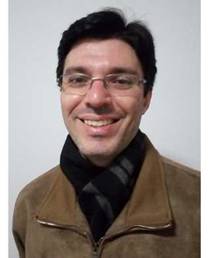报告题目:
Milli- and micro-structured beams constructed from superposition of Bessel beams
报 告 人:
Professor Leonardo André Ambrosio, University of São Paulo, Brazil
报告时间:
2019年8月14日上午10:00
报告地点:
北校区西大楼Ⅲ区412报告厅
报告摘要:
In this talk,theoretical and experimental aspects of a specific class of non-diffracting scalar beams now widely known as Frozen Waves (FWs) are presented. Constructed from superposition of equal-frequency scalar Bessel beams of arbitrary order, they can provide arbitrary and pre-chosen intensity patterns along lines, surfaces or even volumes in space. Starting with the Bessel beams, the Bessel beam is taken as our basic solution in order to construct discrete and continuous FWs whose longitudinal intensity pattern can be chosen a priori.An extension of such linear FWs to Surface FWs is discussed. It is shown that such classes of milli and micro-structured beams can be used with advantage in a variety of applications such as optical trapping and manipulation, photophoretic-trap volumetric displays, holographic displays, 2D and 3D printing, remote sensing, interferometric imaging, particle characterization, nanochannel fabrication in glass and so on.
报告人简介:

Leonardo A. Ambrosio received the B.Sc., M.Sc. and the Ph.D. degree in Electrical Engineering from University of Campinas, School of Electrical and Computer Engineering, Campinas, Brazil, in 2002, 2005 and 2009, respectively. Between2009 and 2013 he was a postdoctoral Fellow with the Department of Microwaves and Optics at the School of Electrical and Computer Engineering, University of Campinas (Unicamp), and developed part of his research at the University of Pennsylvania, Philadelphia,USA. He is now Professor Doctor at the University of São Paulo, in Brazil, the most prestigious and renowned university in Brazil and South America, with the Department of Electrical and Computer Engineering of the São Carlos School of Engineering. His research interests include Photonics, light-scattering problems for optical trapping and manipulation, metamaterials and plasmonics for optical nano-circuits and microstructured light fields and modeling of non-diffracting beams envisioning applications in biomedical optics, telecommunications and atom guiding.


